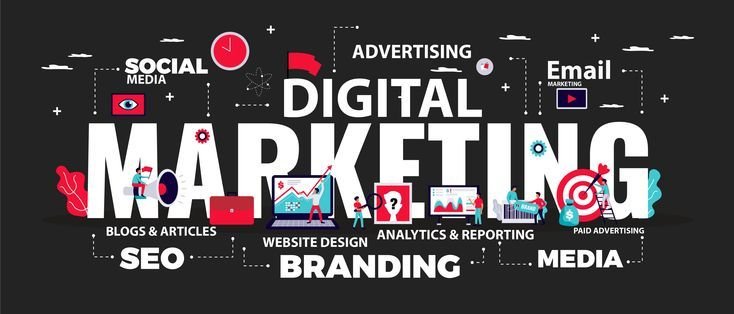AI-Powered Personalized Learning Platforms – Transforming the Future of Education in 2025
In 2025, education is no longer confined to chalkboards, textbooks, or even conventional online classes. We are now witnessing a revolution led by AI-powered personalized learning platforms, which are transforming how students learn, how teachers teach, and how institutions adapt. These platforms use advanced Artificial Intelligence to tailor education based on a student’s learning style, pace, strengths, and weaknesses. The goal is not just to deliver content—but to deliver the right content at the right time in the right way.
In a world where every learner is unique, personalized learning is no longer a luxury—it’s a necessity. Traditional classroom methods often struggle to meet the needs of every student. Some grasp concepts quickly, while others require more time and explanation. That’s where AI steps in. It creates an adaptive, intelligent, and student-centric approach to education, making learning more effective, efficient, and engaging.
Let’s explore how these AI-powered platforms are reshaping the education landscape, the benefits they offer, how they work, and what the future holds for learners, educators, and institutions.
📌 What Are AI-Powered Personalized Learning Platforms?
AI-powered personalized learning platforms are educational systems that use artificial intelligence and machine learning algorithms to deliver tailored learning experiences. Instead of a one-size-fits-all curriculum, these platforms adjust content based on each learner’s individual performance, preferences, and pace.
These systems continuously gather data as the learner interacts with the content—tracking quiz results, time spent on topics, response patterns, and even emotional engagement. Based on this analysis, the platform recommends what the learner should study next, how to reinforce weak areas, and how to progress effectively.
Some popular examples include Khan Academy, BYJU’S, Duolingo, Coursera’s SkillSets, Socratic by Google, DreamBox, and Squirrel AI.
⚙️ How Do These Platforms Work?
Here’s how AI creates personalized learning experiences:
- Data Collection: The platform gathers data on each student’s behavior—quiz scores, time spent on lessons, click patterns, and engagement metrics.
- Machine Learning Models: AI algorithms process the data to detect patterns, identify knowledge gaps, and understand each student’s strengths and weaknesses.
- Adaptive Learning Paths: Based on this analysis, the platform adjusts the lesson plan—offering remedial content, alternative formats (videos, games, or quizzes), and practice exercises.
- Real-Time Feedback: The learner receives instant responses on performance, along with actionable suggestions.
- Predictive Analytics: The system forecasts a learner’s likely performance and readiness, offering preparation strategies well in advance.
These AI features create a feedback loop, continuously improving the learner’s experience with every interaction.
🎯 Benefits of AI-Powered Personalized Learning Platforms
1. Individualized Learning Journeys
Every learner is different. AI enables platforms to understand and respond to individual needs, tailoring content delivery to match learning speed, style, and prior knowledge.
2. Increased Engagement and Motivation
Personalized learning keeps students engaged by avoiding repetition and boredom. When students see immediate progress, they stay motivated.
3. Better Academic Outcomes
AI helps identify weak areas early and provides targeted interventions. This leads to improved grades, deeper understanding, and long-term retention.
4. Efficient Learning
Instead of wasting time on topics a learner has already mastered, AI directs focus toward challenging areas—making study time more efficient.
5. Scalability
AI systems can handle thousands of students at once, each receiving a personalized experience. This makes quality education accessible at scale.
6. Continuous Feedback for Teachers
AI tools generate detailed reports on student progress, allowing educators to make data-driven decisions and provide targeted support.
🏫 Real-World Use Cases in 2025
✅ K-12 Education
In schools, AI platforms like DreamBox and Khan Academy provide math and reading lessons that adjust in real time. Teachers use dashboards to see student progress and intervene where necessary.
✅ Higher Education
Universities are using AI for smart grading, plagiarism detection, and student support. Platforms like Carnegie Learning and Century Tech help colleges offer customized learning paths, especially in STEM subjects.
✅ Online Learning Platforms
MOOCs (Massive Open Online Courses) like Coursera, edX, and Udemy use AI to recommend courses, suggest skill development paths, and personalize learning schedules.
✅ Language Learning
Apps like Duolingo use adaptive learning engines that personalize vocabulary, grammar lessons, and pronunciation practice based on user performance.
✅ Competitive Exam Prep
Ed-tech platforms like BYJU’S, Embibe, and Toppr use AI to track students’ preparation for JEE, NEET, UPSC, and SSC, offering real-time performance insights and targeted practice.
✅ Corporate Training
AI-driven LMS platforms such as Docebo and SAP Litmos help companies provide employees with personalized skill development programs that align with their roles and career growth.
🔮 The Future of AI in Education Beyond 2025
1. AI-Powered Virtual Tutors
Advanced AI tutors will interact conversationally with students, answering questions, giving feedback, and teaching topics just like a human teacher—but 24/7.
2. Emotion-Aware Learning
AI will use facial recognition and speech analysis to detect confusion, frustration, or engagement levels—and adjust teaching style in real time.
3. Immersive AI + AR/VR Classrooms
Combining AI with Augmented and Virtual Reality will create fully immersive learning environments—virtual labs, historical re-enactments, and real-life simulations.
4. Career & Skill Mapping
AI will not only teach but guide learners on career paths based on performance, interests, and job market trends.
5. Smart Assessments
Exams will move beyond MCQs. AI will analyze essays, case studies, and projects for creativity, logic, and depth—offering holistic evaluations.
6. Blockchain-Powered Learning Records
Learners will have digital transcripts stored securely via blockchain, recording every course completed, skill earned, and certification—automatically updated by AI.
🧠 Why AI Is a Game-Changer in Education
➤ Personalized Attention at Scale
Traditionally, one teacher can only attend to a few students in a class. AI bridges this gap by giving every student individual attention.
➤ Support for Special Needs Learners
AI-powered tools support learners with disabilities through features like speech-to-text, content translation, voice assistance, and real-time visual aids.
➤ Global Access
AI platforms can be accessed from anywhere, allowing students from rural or underserved regions to learn from top educators.
➤ Continuous Learning
AI encourages lifelong learning by adapting to learners at every stage—school, college, professional upskilling, and beyond.
🧱 Challenges to Address
Despite the promise, some concerns must be addressed to make AI truly transformative:
• Data Privacy
AI relies on massive amounts of personal data. Ensuring that student data is secure and not misused is essential.
• Algorithmic Bias
If AI systems are trained on biased datasets, they may give unfair recommendations or grades. Ethical AI design is crucial.
• Digital Divide
Not every student has access to high-speed internet or digital devices. Without infrastructure, personalized learning cannot reach everyone.
• Over-Reliance on Technology
While AI can assist, the human connection in education—empathy, mentorship, and motivation—remains irreplaceable.
🏫 How Educational Institutions Can Integrate AI in 2025
- Start Small: Implement AI tools in specific areas like assessments, language learning, or remedial classes.
- Train Teachers: Provide workshops and certifications to help educators understand and use AI tools effectively.
- Choose Ethical Platforms: Select vendors who prioritize transparency, security, and inclusivity in their AI systems.
- Blend AI with Human Teaching: Use AI to assist, not replace, educators. A blended model ensures maximum impact.
- Track Outcomes: Regularly measure the effectiveness of AI tools through student performance and feedback.
🌍 AI and the Democratization of Learning
One of the most powerful promises of AI in education is equal access to quality learning. In a traditional system, geography, economic status, or physical ability often limits a student’s access to resources. With AI, a student in a small town can receive the same personalized attention and advanced tools as one in a metro city.
Government initiatives like NEP 2020 in India emphasize digital transformation and inclusion. Platforms like DIKSHA and SWAYAM are beginning to integrate AI features to reach millions of learners with limited resources.
📌 Conclusion
The future of education is here—and it’s intelligent, inclusive, and personalized. AI-powered personalized learning platforms are no longer experimental—they’re transforming how millions of students learn around the world in 2025.
These platforms don’t just automate education; they elevate it. They empower students to take control of their learning journeys and enable teachers to be more effective guides. They offer institutions a way to scale quality, adapt quickly, and deliver measurable outcomes.
Yes, there are challenges to address—but the momentum is clear. AI is not replacing educators; it’s becoming their most powerful ally.
The question is no longer if AI will change education. It already has. The question is—are you ready to be part of this revolution?
🚀 Want Help Finding AI-Based Learning Tools?
At College Sarathi, we help students and educators choose the best AI-powered online learning platforms and UGC-approved online degrees. Whether you’re a student, teacher, or institution—our experts can guide you.
🌐 Visit: www.collegesarathi.com
📞 Call/WhatsApp: +918595747197
📧 Email: info@collegesaIn 2025, education is no longer confined to chalkboards, textbooks, or even conventional online classes. We are now witnessing a revolution led by AI-powered personalized learning platforms, which are transforming how students learn, how teachers teach, and how institutions adapt. These platforms use advanced Artificial Intelligence to tailor education based on a student’s learning style, pace, strengths, and weaknesses. The goal is not just to deliver content—but to deliver the right content at the right time in the right way.
In a world where every learner is unique, personalized learning is no longer a luxury—it’s a necessity. Traditional classroom methods often struggle to meet the needs of every student. Some grasp concepts quickly, while others require more time and explanation. That’s where AI steps in. It creates an adaptive, intelligent, and student-centric approach to education, making learning more effective, efficient, and engaging.
Let’s explore how these AI-powered platforms are reshaping the education landscape, the benefits they offer, how they work, and what the future holds for learners, educators, and institutions.
📌 What Are AI-Powered Personalized Learning Platforms?
AI-powered personalized learning platforms are educational systems that use artificial intelligence and machine learning algorithms to deliver tailored learning experiences. Instead of a one-size-fits-all curriculum, these platforms adjust content based on each learner’s individual performance, preferences, and pace.
These systems continuously gather data as the learner interacts with the content—tracking quiz results, time spent on topics, response patterns, and even emotional engagement. Based on this analysis, the platform recommends what the learner should study next, how to reinforce weak areas, and how to progress effectively.
Some popular examples include Khan Academy, BYJU’S, Duolingo, Coursera’s SkillSets, Socratic by Google, DreamBox, and Squirrel AI.
⚙️ How Do These Platforms Work?
Here’s how AI creates personalized learning experiences:
- Data Collection: The platform gathers data on each student’s behavior—quiz scores, time spent on lessons, click patterns, and engagement metrics.
- Machine Learning Models: AI algorithms process the data to detect patterns, identify knowledge gaps, and understand each student’s strengths and weaknesses.
- Adaptive Learning Paths: Based on this analysis, the platform adjusts the lesson plan—offering remedial content, alternative formats (videos, games, or quizzes), and practice exercises.
- Real-Time Feedback: The learner receives instant responses on performance, along with actionable suggestions.
- Predictive Analytics: The system forecasts a learner’s likely performance and readiness, offering preparation strategies well in advance.
These AI features create a feedback loop, continuously improving the learner’s experience with every interaction.
🎯 Benefits of AI-Powered Personalized Learning Platforms
1. Individualized Learning Journeys
Every learner is different. AI enables platforms to understand and respond to individual needs, tailoring content delivery to match learning speed, style, and prior knowledge.
2. Increased Engagement and Motivation
Personalized learning keeps students engaged by avoiding repetition and boredom. When students see immediate progress, they stay motivated.
3. Better Academic Outcomes
AI helps identify weak areas early and provides targeted interventions. This leads to improved grades, deeper understanding, and long-term retention.
4. Efficient Learning
Instead of wasting time on topics a learner has already mastered, AI directs focus toward challenging areas—making study time more efficient.
5. Scalability
AI systems can handle thousands of students at once, each receiving a personalized experience. This makes quality education accessible at scale.
6. Continuous Feedback for Teachers
AI tools generate detailed reports on student progress, allowing educators to make data-driven decisions and provide targeted support.
🏫 Real-World Use Cases in 2025
✅ K-12 Education
In schools, AI platforms like DreamBox and Khan Academy provide math and reading lessons that adjust in real time. Teachers use dashboards to see student progress and intervene where necessary.
✅ Higher Education
Universities are using AI for smart grading, plagiarism detection, and student support. Platforms like Carnegie Learning and Century Tech help colleges offer customized learning paths, especially in STEM subjects.
✅ Online Learning Platforms
MOOCs (Massive Open Online Courses) like Coursera, edX, and Udemy use AI to recommend courses, suggest skill development paths, and personalize learning schedules.
✅ Language Learning
Apps like Duolingo use adaptive learning engines that personalize vocabulary, grammar lessons, and pronunciation practice based on user performance.
✅ Competitive Exam Prep
Ed-tech platforms like BYJU’S, Embibe, and Toppr use AI to track students’ preparation for JEE, NEET, UPSC, and SSC, offering real-time performance insights and targeted practice.
✅ Corporate Training
AI-driven LMS platforms such as Docebo and SAP Litmos help companies provide employees with personalized skill development programs that align with their roles and career growth.
🔮 The Future of AI in Education Beyond 2025
1. AI-Powered Virtual Tutors
Advanced AI tutors will interact conversationally with students, answering questions, giving feedback, and teaching topics just like a human teacher—but 24/7.
2. Emotion-Aware Learning
AI will use facial recognition and speech analysis to detect confusion, frustration, or engagement levels—and adjust teaching style in real time.
3. Immersive AI + AR/VR Classrooms
Combining AI with Augmented and Virtual Reality will create fully immersive learning environments—virtual labs, historical re-enactments, and real-life simulations.
4. Career & Skill Mapping
AI will not only teach but guide learners on career paths based on performance, interests, and job market trends.
5. Smart Assessments
Exams will move beyond MCQs. AI will analyze essays, case studies, and projects for creativity, logic, and depth—offering holistic evaluations.
6. Blockchain-Powered Learning Records
Learners will have digital transcripts stored securely via blockchain, recording every course completed, skill earned, and certification—automatically updated by AI.
🧠 Why AI Is a Game-Changer in Education
➤ Personalized Attention at Scale
Traditionally, one teacher can only attend to a few students in a class. AI bridges this gap by giving every student individual attention.
➤ Support for Special Needs Learners
AI-powered tools support learners with disabilities through features like speech-to-text, content translation, voice assistance, and real-time visual aids.
➤ Global Access
AI platforms can be accessed from anywhere, allowing students from rural or underserved regions to learn from top educators.
➤ Continuous Learning
AI encourages lifelong learning by adapting to learners at every stage—school, college, professional upskilling, and beyond.
🧱 Challenges to Address
Despite the promise, some concerns must be addressed to make AI truly transformative:
• Data Privacy
AI relies on massive amounts of personal data. Ensuring that student data is secure and not misused is essential.
• Algorithmic Bias
If AI systems are trained on biased datasets, they may give unfair recommendations or grades. Ethical AI design is crucial.
• Digital Divide
Not every student has access to high-speed internet or digital devices. Without infrastructure, personalized learning cannot reach everyone.
• Over-Reliance on Technology
While AI can assist, the human connection in education—empathy, mentorship, and motivation—remains irreplaceable.
🏫 How Educational Institutions Can Integrate AI in 2025
- Start Small: Implement AI tools in specific areas like assessments, language learning, or remedial classes.
- Train Teachers: Provide workshops and certifications to help educators understand and use AI tools effectively.
- Choose Ethical Platforms: Select vendors who prioritize transparency, security, and inclusivity in their AI systems.
- Blend AI with Human Teaching: Use AI to assist, not replace, educators. A blended model ensures maximum impact.
- Track Outcomes: Regularly measure the effectiveness of AI tools through student performance and feedback.
🌍 AI and the Democratization of Learning
One of the most powerful promises of AI in education is equal access to quality learning. In a traditional system, geography, economic status, or physical ability often limits a student’s access to resources. With AI, a student in a small town can receive the same personalized attention and advanced tools as one in a metro city.
Government initiatives like NEP 2020 in India emphasize digital transformation and inclusion. Platforms like DIKSHA and SWAYAM are beginning to integrate AI features to reach millions of learners with limited resources.
📌 Conclusion
The future of education is here—and it’s intelligent, inclusive, and personalized. AI-powered personalized learning platforms are no longer experimental—they’re transforming how millions of students learn around the world in 2025.
These platforms don’t just automate education; they elevate it. They empower students to take control of their learning journeys and enable teachers to be more effective guides. They offer institutions a way to scale quality, adapt quickly, and deliver measurable outcomes.
Yes, there are challenges to address—but the momentum is clear. AI is not replacing educators; it’s becoming their most powerful ally.
The question is no longer if AI will change education. It already has. The question is—are you ready to be part of this revolution?
🚀 Want Help Finding AI-Based Learning Tools?
At College Sarathi, we help students and educators choose the best AI-powered online learning platforms and UGC-approved online degrees. Whether you’re a student, teacher, or institution—our experts can guide you.
🌐 Visit: www.collegesarathi.com
📞 Call/WhatsApp: +91-8595747197
📧 Email: info@collegesarathi.comrathi.com



















